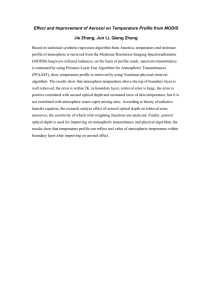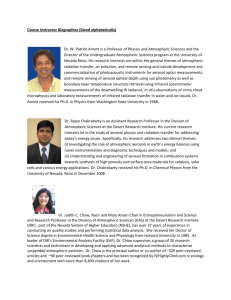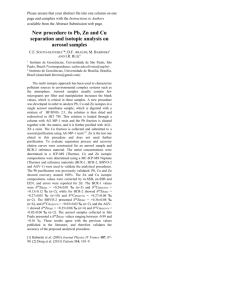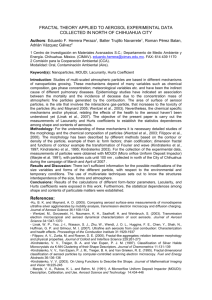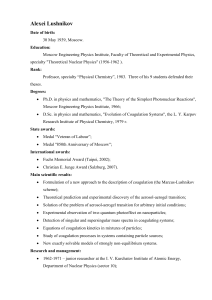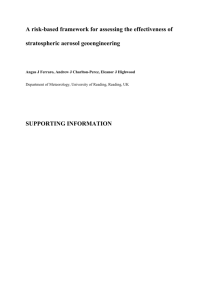Project acronym: OPTICON
advertisement
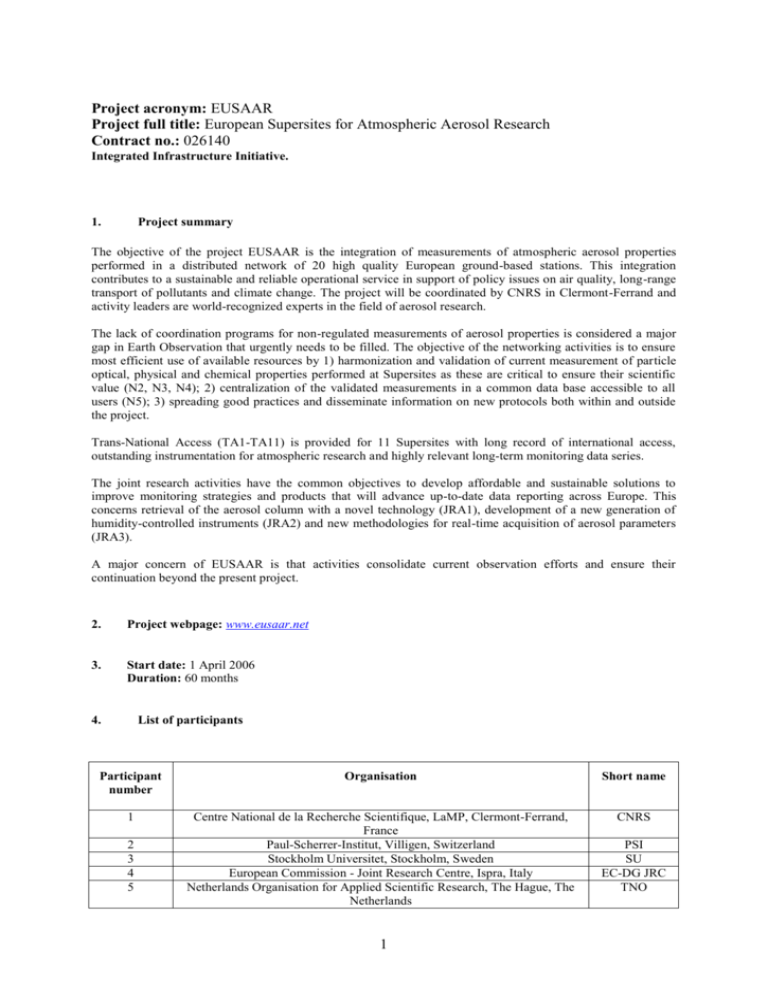
Project acronym: EUSAAR Project full title: European Supersites for Atmospheric Aerosol Research Contract no.: 026140 Integrated Infrastructure Initiative. 1. Project summary The objective of the project EUSAAR is the integration of measurements of atmospheric aerosol properties performed in a distributed network of 20 high quality European ground-based stations. This integration contributes to a sustainable and reliable operational service in support of policy issues on air quality, long-range transport of pollutants and climate change. The project will be coordinated by CNRS in Clermont-Ferrand and activity leaders are world-recognized experts in the field of aerosol research. The lack of coordination programs for non-regulated measurements of aerosol properties is considered a major gap in Earth Observation that urgently needs to be filled. The objective of the networking activities is to ensure most efficient use of available resources by 1) harmonization and validation of current measurement of particle optical, physical and chemical properties performed at Supersites as these are critical to ensure their scientific value (N2, N3, N4); 2) centralization of the validated measurements in a common data base accessible to all users (N5); 3) spreading good practices and disseminate information on new protocols both within and outside the project. Trans-National Access (TA1-TA11) is provided for 11 Supersites with long record of international access, outstanding instrumentation for atmospheric research and highly relevant long-term monitoring data series. The joint research activities have the common objectives to develop affordable and sustainable solutions to improve monitoring strategies and products that will advance up-to-date data reporting across Europe. This concerns retrieval of the aerosol column with a novel technology (JRA1), development of a new generation of humidity-controlled instruments (JRA2) and new methodologies for real-time acquisition of aerosol parameters (JRA3). A major concern of EUSAAR is that activities consolidate current observation efforts and ensure their continuation beyond the present project. 2. Project webpage: www.eusaar.net 3. Start date: 1 April 2006 Duration: 60 months 4. List of participants Participant number Organisation Short name 1 Centre National de la Recherche Scientifique, LaMP, Clermont-Ferrand, France Paul-Scherrer-Institut, Villigen, Switzerland Stockholm Universitet, Stockholm, Sweden European Commission - Joint Research Centre, Ispra, Italy Netherlands Organisation for Applied Scientific Research, The Hague, The Netherlands CNRS 2 3 4 5 1 PSI SU EC-DG JRC TNO 6 7 8 9 10 11 12 13 14 15 16 17 18 19 20 21 Leibniz Institute for Tropospheric research, Leipzig, Germany Norwegian Institute for Air Research, Keller, Norway Consiglio Nazionale delle Ricerche, ISAC, Bologna, Italy University of Helsinki, Helsinki, Finland National University of Ireland, Galway, Ireland University of Crete, Heraklion, Greece Finnish Meteorological Institute, Helsinki, Finland Pannon University, Veszprem, Hungary Institute of Chemical Process Fundamentals, Prague, Czech Republic Ruprecht-Karls-Universitat Heidelberg, Heidelberg, Germany Institute for Nuclear Research and Nuclear Energy, Bulgarian Academy of Science, Sofia, Bulgaria The University of Birmingham, Birmingham, United Kingdom Institute of Physics, Vilnius, Lithuania Lund University, Lund, Sweden Consejo Superior de Investigaciones Científicas, Institute of Earth Sciences, Barcelona, Spain Hoffmann Messtechnik GmbH, Rauenberg, Germany 2 IFT NILU ISAC - CNR UHEL NUIG UOC FMI ACUV ICPF AS CR UHEI INRNE UNI BHAM IPL ULUND CSIC-IES HMT
